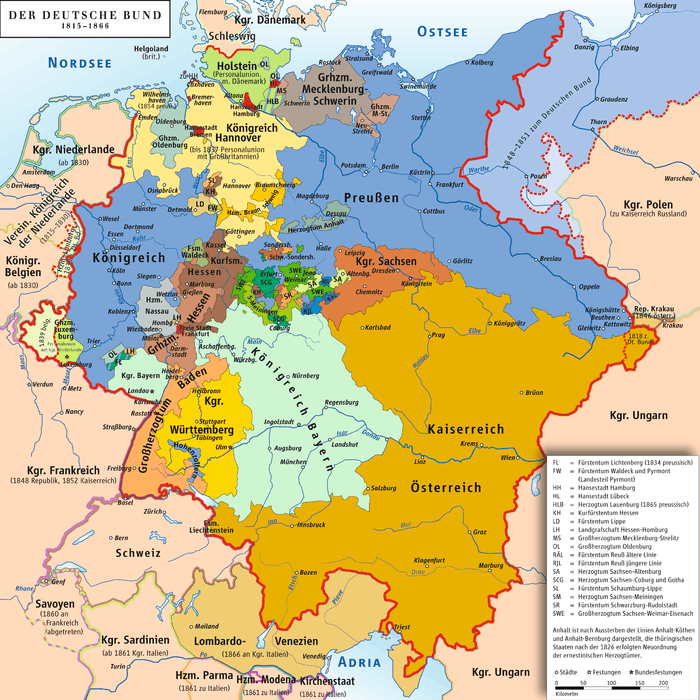Hesse-Homburg
| Landgraviate of Hesse-Homburg | ||||||||||||
| Landgrafschaft Hessen-Homburg | ||||||||||||
| ||||||||||||
 Flag
.svg.png) Coat of arms
| ||||||||||||
 Map of Hesse-Homburg (in red) and Middle Rhine | ||||||||||||
| Capital | Bad Homburg | |||||||||||
| Languages | German | |||||||||||
| Government | Principality | |||||||||||
| Landgrave | ||||||||||||
| • | 1622–1638 | Frederick I | ||||||||||
| • | 1848–1866 | Ferdinand | ||||||||||
| History | ||||||||||||
| • | Established | 1622 | ||||||||||
| • | Ceded by Darmstadt | 1668 | ||||||||||
| • | Ceded to Darmstadt | 1806 | ||||||||||
| • | Re-established | 1815 | ||||||||||
| • | Grand Duchy of Hesse¹ | 1866 | ||||||||||
| ||||||||||||
| ¹ Meisenheim ceded to the Prussian province of Hesse-Nassau. | ||||||||||||
Hesse-Homburg was formed into a separate landgraviate in 1622 by the landgrave of Hesse-Darmstadt; it was to be ruled by his son, although it did not become independent of Hesse-Darmstadt until 1668.
It was briefly divided into Hesse-Homburg and Hesse-Homburg-Bingenheim; but these parts were reunited in 1681.
In 1806, Hesse-Homburg was incorporated with Hesse-Darmstadt; but in 1815, by the Congress of Vienna, the latter state was compelled to recognize the independence of Hesse-Homburg, which was increased by the addition of Meisenheim.
The landgraviate of Hesse-Homburg consisted of two parts, the district of Homburg on the right side of the Rhine, and the district of Meisenheim, added in 1815, on the left side of the same river.
In 1866, Hesse-Homburg was inherited by the grand-duke of Hesse-Darmstadt, while Meisenheim fell to Prussia. Later that same year, these territories were taken from Hesse-Darmstadt again, and the former landgraviate was combined with the Electorate of Hesse-Kassel, duchy of Nassau, and the free city of Frankfurt to form the Prussian province of Hesse-Nassau.
Today, it forms a part of the German state of Hesse.
See also
- [[:Category:House of Hesse-Homburg|]]
- Rulers of Hesse

